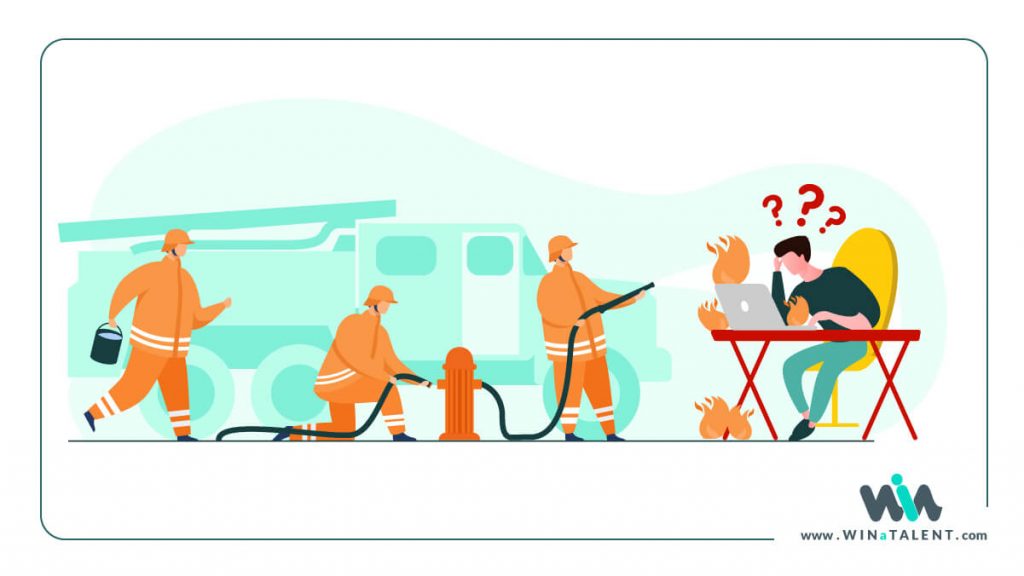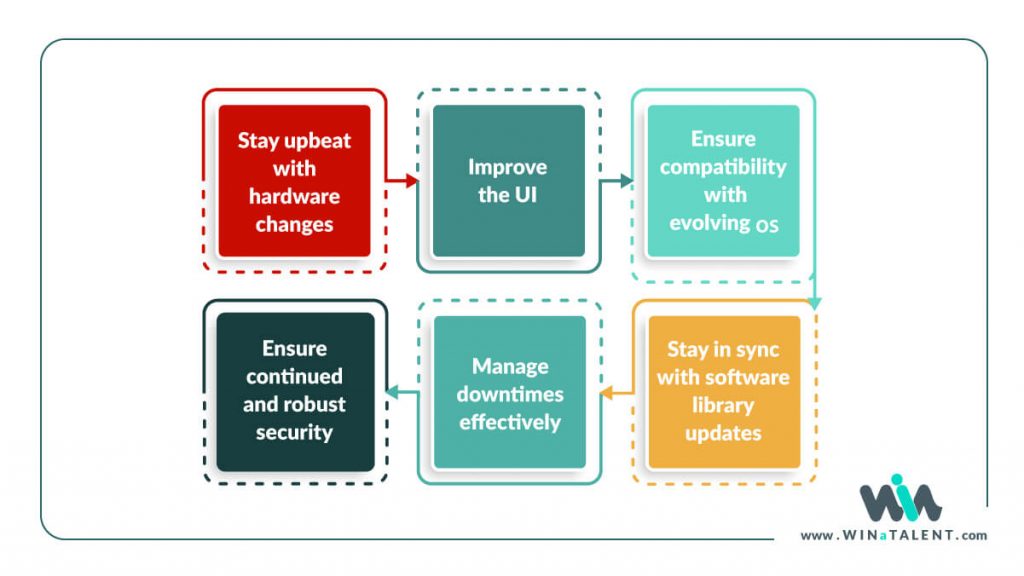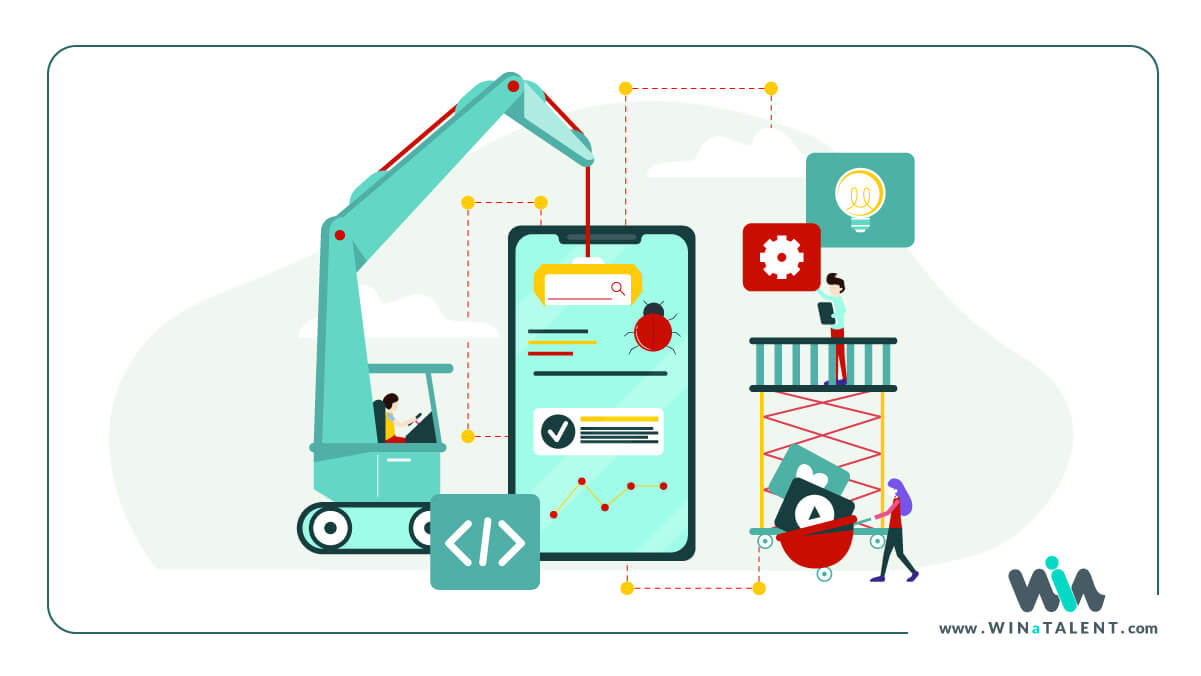So let us start with what we mean by app maintenance.
We talked about different types of applications, prototypes, and details about the design and app industries on our app-building journey. By now, you must know why you want to develop a certain kind of app and how to look at its development step by step. But as you know, these steps are just the beginning of your app development journey.
Maintenance refers to monitoring, refining, fixing, and updating the components that secure an excellent end-user experience.
A successful mobile app is not just an app with the highest download rates. It is a lot better to have a large number of active users and a high recognition rate.
There are five types of app maintenance:

Emergency Maintenance
Emergency maintenance (also known as breakdown maintenance) means when an asset or piece of equipment suffers an unforeseen disruption or change in status. This emergency situation can hurt the brand reputation, result in loss of life, and have a substantial negative impact on the company’s bottom line.
You expect your maintenance team to resolve these sorts of obstacles in the shortest possible time. Emergency maintenance situations are the most stressful events for any maintenance team.
Perfective Maintenance
Perfective maintenance means a modification of a software product after its release.
By perfective care, you improve performance or maintainability. The maintenance team needs to detect and correct latent faults in the software product before they become errors.
Adaptive Maintenance
As we mentioned above, the mobile platform is an ever-changing environment. Through adaptive maintenance, your team keeps your app functional in a changed or changing environment after development. Adaptive maintenance is required over your application’s life cycle to modify your app, so it continues to run as the external environment changes.
Preventive Maintenance
Your maintenance team must closely observe your application to keep it working and prevent possible unexpected disruptions.
By using preventive maintenance, you reduce the risk of application failure in the long run.
Corrective Maintenance
In corrective maintenance, your team will have to identify, isolate, and rectify a fault so that the failed equipment, machine, or system would get restored to an operational state within the established limits of the in-service operations.
Maintenance Strategy:
Your maintenance strategy mostly depends on your app type and app industry. Logically, an e-commerce multi-feature application with millions of daily users ( like Snapp! Or Uber) requires a more proactive maintenance plan than a minimal one-page app meant to implement the basic functionality (like a calculator).
Application directors need to ensure that applications run smoothly and generate an advantage for the whole business.
If your application distorts the application maintenance processes, IT turns into a house on fire. This fire will result in unnecessary waste of time, money, and effort. In your application, the maintenance strategy should always meet the business requirements.
Use segmenting applications to the criticality of the business process. Strategically essential applications get the level of maintenance consideration they deserve.
Let us have a proper strategic way of thinking by following the steps below:
- Assign maintenance responsibilities to functions, not specific individuals. Strengthen knowledge sharing wherever practicable. This practice will help with emergency planning.
- Organize IT’s triage processes so that technicians are spending an appropriate amount of time on high-priority items. Include low-level items so that they don’t pile up. Keep diplomacy from interfering with prioritizing goals.
- View maintenance as more than defect investigation, troubleshooting, and bug fixing. Instead, put greater emphasis on preventive and perfective care.
- Successful IT teams put strategic foresight and resourcing into their maintenance efforts. It is better to act like a solution provider instead of putting out the fire!
- The project code describes the main business drivers or purposes that your maintenance team hopes to accomplish by re-engineering application maintenance processes and resource structures.
- People administer application maintenance. Do not focus solely on the technology and process. It is risky if you don’t clearly understand your maintenance team’s current composition and skillset.
- Identify your maintenance team’s strong points and where they need improvement. (include training, reorganization, hiring, or transferring new personnel into your team).
- Regardless of the maintenance type, always keep these four overarching steps that each request must take: intake, triage, prioritization, and resolution.
- Always comprise people, processes, and technology into your vision. Use vision statements and conceptualize how your target stage should look like.
- Prioritization exercises will help your team to prioritize which initiatives they should focus on and execute first.
- The aim should always be progression, not perfection. Application maintenance is a complicated task that causes every organization effort and some backsliding into poor practices.
- Be vigilant and aware of the efforts and determinations if the changes you are making help deliver positive results.
- Celebrate the small wins of your maintenance team. These celebrations will help them gain recognition and stay motivated.
It would help if you also asked some critical questions about maintaining your app:
What is the difference between app support and app maintenance?
While the support system you build for your app helps with bug fixes and technical problems, app maintenance is mostly about “keeping your app in use”.
If you plan to start building an app or recently launched your application, you need to have a robust maintenance strategy for keeping your app in an app store.
Why is app maintenance so essential?
By using a mobile phone as your development ground, you face a continually evolving platform. This evaluation happens in both software and hardware. Therefore, you need to keep your app compatible with all these changes.
These progressions mainly get placed by gadget makers and working framework proprietors like Apple and Google. App developers have no control over these changes and updates.
Here are some of the main reasons you need to consider a maintenance strategy for your app development journey:
- New Gadgets: Every year, many new gadgets are entering the mobile market.
- The innovative form of the working framework: Every year, the essential framework changes altogether, so you need to keep your application compatible with it.
- New state of programming dialect: Yearly, the linguistic structures developers used to build applications go through changes.
- Unique styles and plans: UI styles change every year to keep the user experience fresh and to make use of the recent advances.
- New library forms: The libraries and conditions designers used to make applications with change every year.
- New user designs: The characteristics of your client base can vary yearly.
- Infrastructure changes: The structures supporting your application can go through changes every year.
- Security changes: Application parts might be affected by security changes every year.
Unfortunately, these changes do not happen at a particular time or date, and most importantly, you and your team would have next to zero ideas about when they will occur. Therefore, you need to keep your maintenance active all the time.
Another reason to have a maintenance strategy is to gather an optimized response and return on investment.
Do keep this in mind: If your app does not adjust to these progressions, it will eventually stop working. And as a matter of fact, you will lose your active users.
Conclusion:
To sum things up, for app maintenance, keep these steps in mind:

Use WINaTALENT to guide you through app development chaos and maintenance storms. We look at maintaining your app strategically and functionally.
Use our service to find the maintenance team of your dream in our talent pool.

How much does it cost to continue maintenance for an app?
Does it depend on the length of maintenance time only or it depends on other factors as well?
Hi Edward
Thank you for the comment.
A lot of factors can affect the cost of app maintenance.
App type or app industry are some of the examples. But the maintenance cost is more than the development cost.
Read more on our future posts.
Thanks for sharing thought about app maintenance.